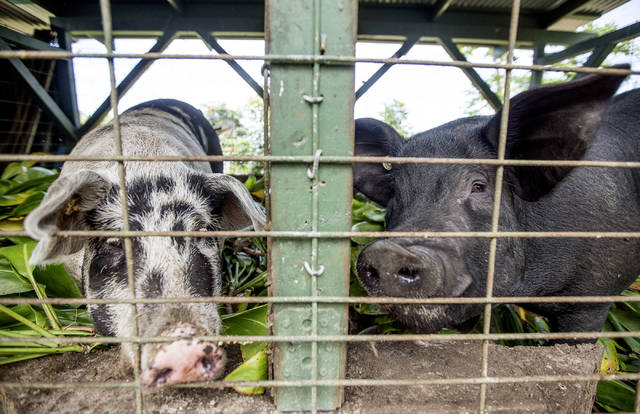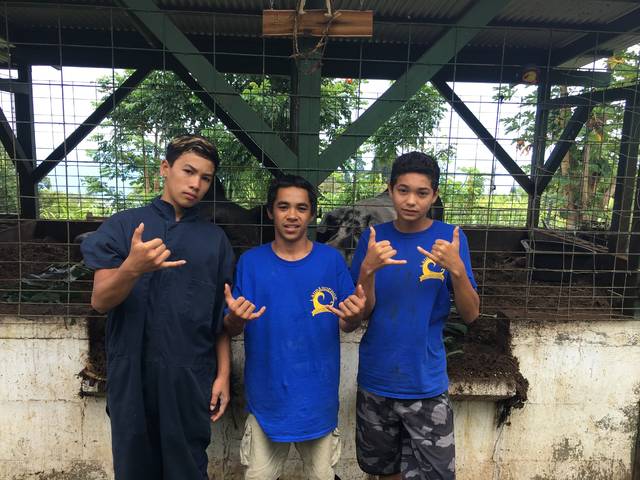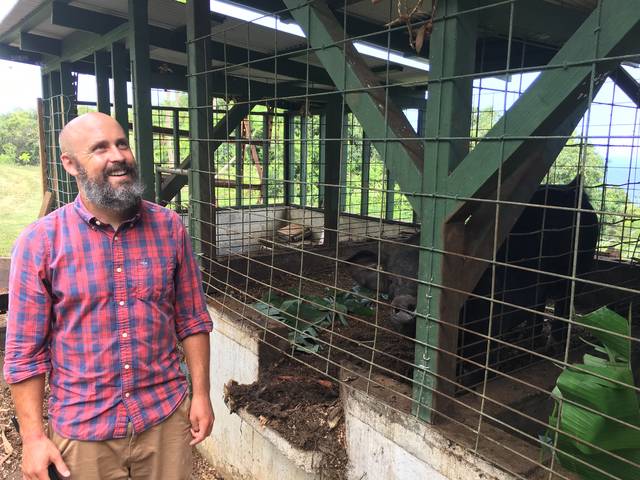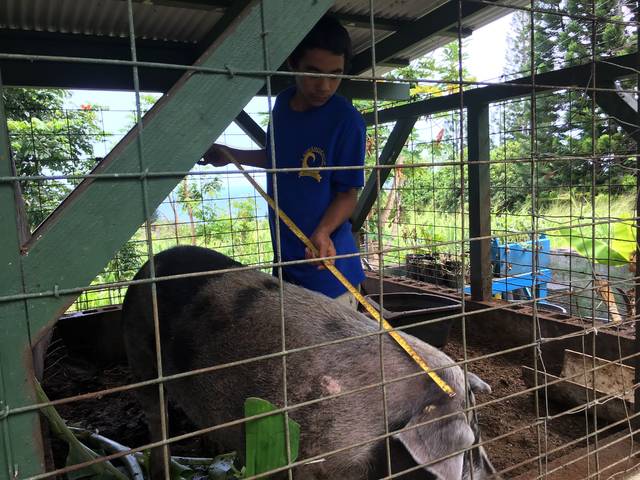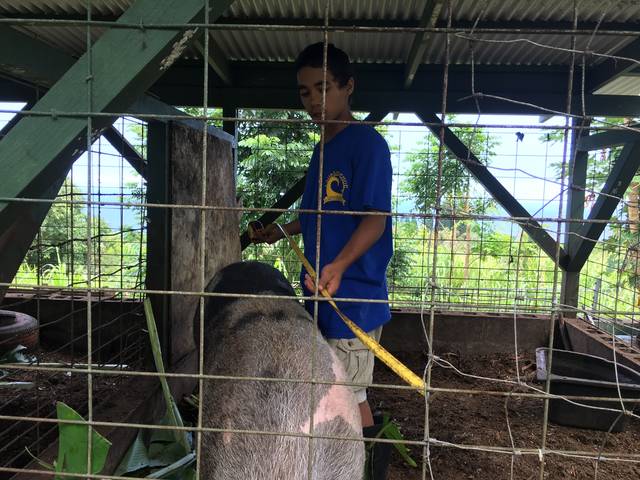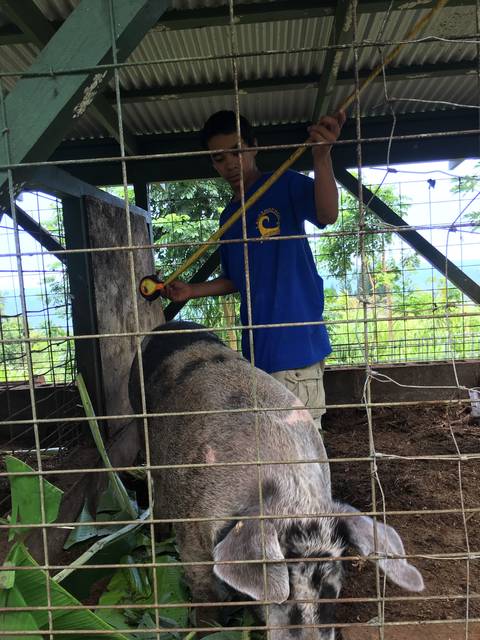LAUPAHOEHOE — It’s just after lunchtime at Laupahoehoe Community Public Charter School, and slop from the cafeteria is getting polished off fast. ADVERTISING LAUPAHOEHOE — It’s just after lunchtime at Laupahoehoe Community Public Charter School, and slop from the cafeteria
LAUPAHOEHOE — It’s just after lunchtime at Laupahoehoe Community Public Charter School, and slop from the cafeteria is getting polished off fast.
The hungry eaters aren’t students — they’re two Berkshire pigs named Rambo Jr. and Patches, each of which require a hefty 6.5 pounds of food per day.
The pigs happily munched away Wednesday as 14-year-old Laupahoehoe student T.J. Rodillas tipped into their concrete pen a generous portion of bananas and carrots.
“It’s pretty fun,” T.J. said, snapping off a chunk of carrot and nuzzling it below Patches’ squealing snout. “I like that you can take care of stuff, and you learn responsibility. I like using natural resources and turning them into something.”
Rambo Jr. and Patches are the stars of Laupahoehoe’s student-operated piggery. The piggery got started in 2012. It began as a hands-on way for students to learn about animal husbandry. A scattering of schools throughout East Hawaii similarly operate piggeries, but Laupahoehoe’s is uniquely part of the school’s special education program.
It’s managed almost entirely by students. Rodillas, along with piggery classmates Preston Parel, 14, and Rayden Lukzen, 14, spend about six hours each week feeding the pigs, spreading sawdust and spraying mulch, along with other duties to maintain the piggery’s inoculated deep-litter system.
The piggery operates under a shoe-string budget — about $500 per year in classroom funds — and houses just two pigs. But the school wants to expand in the future and get more Laupahoehoe students involved.
The pigpen sits just a few yards away from the school building but remains virtually odor-free thanks to its use of Korean natural farming methods.
“It’s such a good project,” Lew Nakamura, Hawaii Community College agriculture instructor, said Friday. Nakamura helped Laupahoehoe get the piggery started. “It’s project-based learning in action, and it’s all encompassing for the students. It’s all hands-on application and it really gives them a focus.”
Last year, the piggery students saw the fruition of their hard work when they slaughtered Rambo Sr. and consumed him as a school. They also funneled proceeds from the meat sale back into piggery costs.
Other piggery expenses are funded in various ways. Laupahoehoe special education instructor Jeff St. Pierre launched an online fundraiser to purchase work clothes for the students and recently replaced fencing around the piggery with the help of a University of Hawaii grant.
Laupahoehoe eventually wants to fill the piggery to capacity. It also hopes to someday add a U.S. Department of Agriculture-approved imu to the land nearby.
St. Pierre said special needs students are “exceptional in many ways” but can get “disenfranchised a little bit by four walls and a roof and school as it’s delivered that way, sitting at a desk.”
“But when they do hands-on activities, such as this, they’re unreal,” St. Pierre said Wednesday as students tended to the pigs nearby. “It’s pretty neat to watch.”
Email Kirsten Johnson at kjohnson@hawaiitribune-herald.com.


